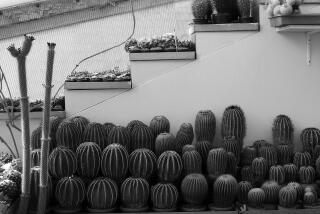‘Poison Fruit’ Doctrine Fell From the Tree of Court Under Warren
- Share via
The doctrine of the fruit of the poisonous tree was established by the U. S. Supreme Court in a 1963 case, Wong Sun et al vs. the United States, in an effort to safeguard a defendant’s protection against unreasonable search and seizure as provided in the 4th Amendment to the U. S. Constitution.
The decision was part of the expansion of the rights of criminal defendants by the high court under Chief Justice Earl Warren.
Though there have been other high-court decisions before and after the Wong Sun case on the issue of probable cause, the Wong Sun decision remains the one most commonly cited in the legal debate over whether an arrest was proper and evidence can be admitted.
The case involved several drug raids in San Francisco in which federal agents arrested four men, including Wong Sun, a.k.a. “Sea Dog.” The arrests began with a raid on Oye’s Laundry after an undercover investigation of a heroin-selling ring.
The legal issue was whether the information gathered at the laundry was sufficient to provide federal drug agents with probable cause to enter Sun’s home and arrest him.
Famed defense attorney Edward Bennett Williams argued that agents were, in effect, on a fishing expedition and had no reason to search Sun’s home. He asked that all evidence be thrown out, including Sun’s confession made in his native Chinese.
The court threw out the convictions of two co-defendants but allowed Sun’s to remain.
It ruled that, although the police made an unlawful entry into his home and arrested him unlawfully, Sun’s confession was “not the fruit of that arrest” because it was made voluntarily several days after he had been released from jail.
The Sun Wong case, like that of Stacy Don Butler in San Diego, raised the question: Is it legal for police officers to raid a house based not on a specific tip that a suspect is inside, but rather on their general knowledge that the house in the past has been used for illegal drug activities?
Six justices said it was not proper and that more information linking a structure to a specific crime is needed before a warrantless entry. Three dissented.
“I cannot say in the face of this record that this was a ‘roaming’ performance up and down Leavenworth Street,” wrote dissenting Justice Tom C. Clark, in an argument likely to be mirrored by prosecutors in the Butler case.
“To me it was efficient police work by officers familiar with San Francisco and the habits and practices of its Chinese-American inhabitants.”
The Sun Wong case also raised a second question that might also affect the Butler case: what constitutes a “break” between an unlawful entry and the gathering of a specific piece of evidence. Sun Wong’s confession was allowed because it was not seen as connected to the unlawful entry of his house.
If the entry into the home on La Paz Street where Butler was found is ruled unlawful, what becomes of the two guns found two days later behind the home?
“The poisonous tree rule is a very complicated piece of law,” said a San Diego judge, “and I think you can expect a judge to give it very careful consideration.”
More to Read
Sign up for Essential California
The most important California stories and recommendations in your inbox every morning.
You may occasionally receive promotional content from the Los Angeles Times.












